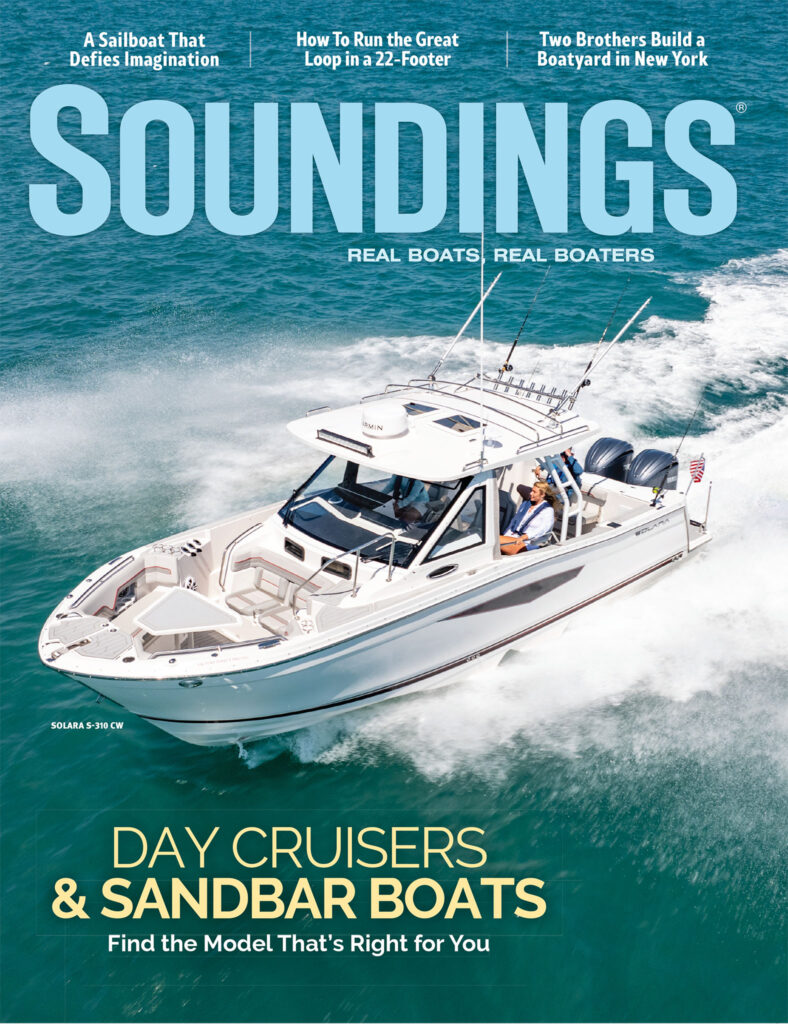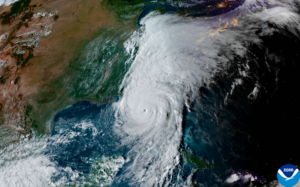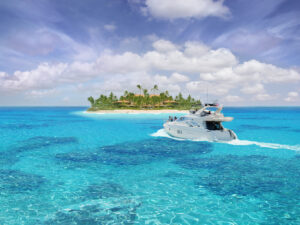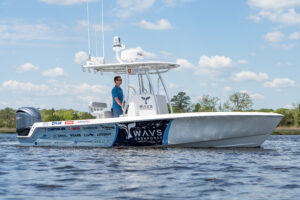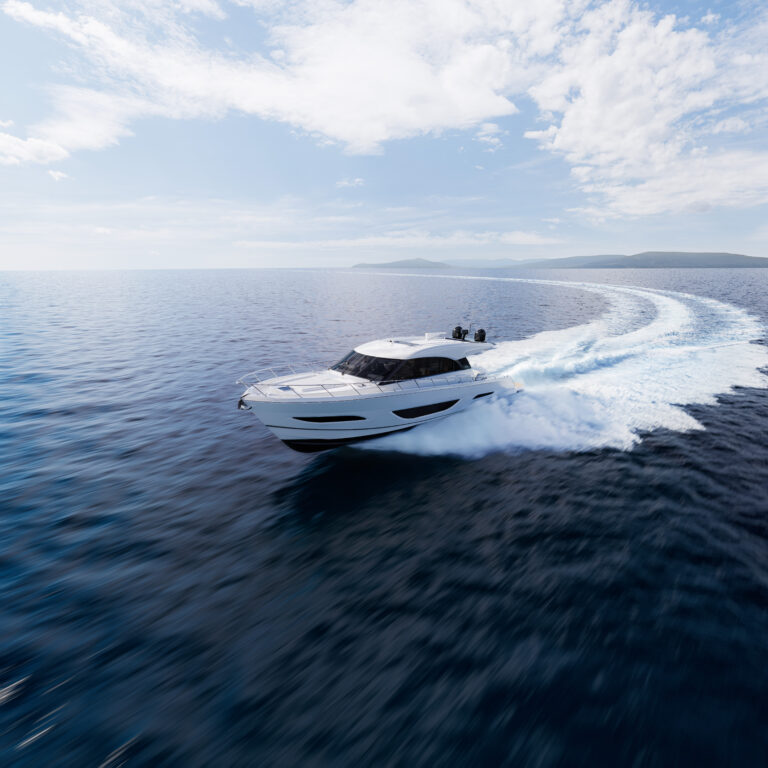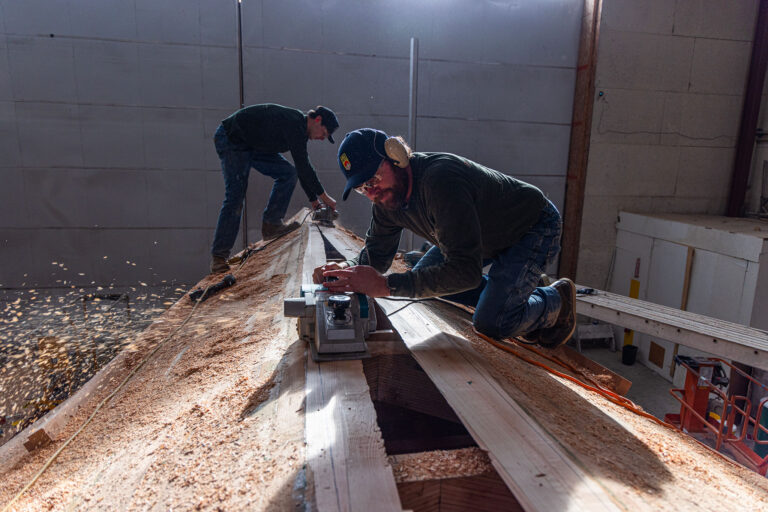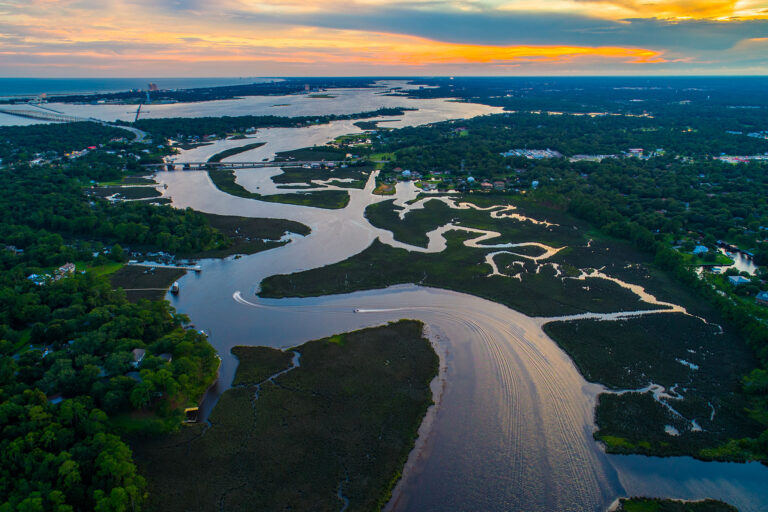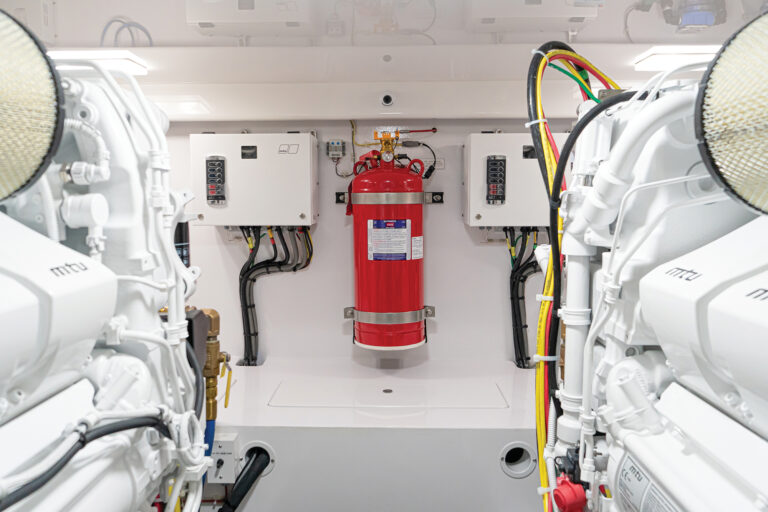Where Hemingway once watched the sun set, you can now watch sport anglers unload their trophy catches
Where Hemingway once watched the sun set, you can now watch sport anglers unload their trophy catches
The gathering of international tall ships at Morehead City this June has helped draw attention to this North Carolina Intracoastal Waterway port, sister-city to nearby and better-known Beaufort. And since the rebirth of Morehead City Yacht Basin in 2004, cruisers have a convenient, friendly, protected harbor just off the ICW — in addition to downtown marinas —
from which to explore.
“This basin has been a marina for 100 years,” says owner Jet Matthews, who grew up in Morehead City. “I used to come [to Morehead City Yacht Basin] as a kid to see the big yachts of celebrities, tobacco kings and Piedmont barons. In those days Burl Ives played his guitar on board his sailboat. Ernest Hemingway’s boat faced east so he could sit in the cockpit with drinks and watch the sunset.
“It was hard to watch the marina deteriorate [after the 1970s],” says Matthews, who also developed Matthews Point Marina off the Neuse River, near ICW Mile 185. “I get great satisfaction out of taking a piece of history and creating a first-class marina that evokes pride among local residents, and provides a sense of community to transients.”
Though the yacht basin was flanked in the 1950s by shipyards and industry — some of which remain — a residential neighborhood lines the four-block walk to the half-mile downtown waterfront. Downtown’s revitalized retail district squeezes between the harbor and the railroad tracks that run down the center median of Arendell Street, Morehead City’s main thoroughfare.
You can also tie up downtown at Portside Marina, Dockside Yacht Club or Morehead Gulf Docks. The heart of downtown is fishing country, and 20-plus charter boats tie up here. Anglers have many choices for half- or full-day charters or headboat trips, but little choice in boat design: nearly all the vessels show the extreme bow flare characteristic of North Carolina sportfishing boats. The fishing that Morehead City is famous for becomes a spectator sport when the catches are unloaded at the city dock. During the Calcutta Wahoo Challenge (April and October) you might see a trophy wahoo. During June’s Big Rock Blue Marlin Tournament, some 150 boats seek marlin that exceed 400 pounds, which are eligible for prizes totaling $1 million. The winning fish typically is around 500 pounds, but in 2000 a record 831-pounder was landed. At the Crystal Coast Visitors Center on Arendell Street you can view the first blue marlin caught out of Morehead City that broke the 1,000-pound mark — that was in 1989.
And the fish aren’t just for catching. For decades seafood lovers have headed to dock-and-dine restaurants Capt. Bill’s and the Sanitary Fish Market. (The latter also retails seafood.) Since the downtown revitalization, new upscale establishments have opened, with even more varied menus. Now you’ll find Sugarloaf Island Bistro and Pub, Key West Seafood, Williams Restaurant, Windansea Fine Food and others, plus shops selling ice cream, coffees and bakery treats. Floyd’s 1921, a block from Morehead City Yacht Basin, serves Southern comfort food with pizzazz. Don’t miss its Sunday Taste of the South Brunch Buffet. Along Arendell Street, other restaurants offer various cuisines and price ranges, and at the malls on the city’s western outskirts you’ll find fast-food and chain restaurants.
Activities and music enliven downtown from 5:30 to 8 p.m. on “First Fridays” from June through December, and during summer Saturday evening concerts. Downtown also boasts art galleries, antique shops and boutiques, many with a nautical emphasis, plus banks and service businesses; be sure to check out DeeGee’s Books and Gifts. You can’t miss King Neptune, seemingly rising out of the docks by the Olympic Dive Shop. Perhaps he brings luck to the company’s dive trips to area shipwrecks.
A short walk from Charter Boat Row, past new waterfront parks, lies the so-called “Promised Land” neighborhood of small houses, many of which are being renovated or expanded. The old homes were part of Diamond City, a fishing community on Shackleton Banks devastated by an 1899 hurricane. The surviving homes were barged over to the mainland, or the Promised Land.
At The History Place museum you can view more of Morehead City’s heritage. The important fishing and associated industries — from menhaden harvesting and processing to the building of split-log canoes and today’s sportfishing boats — dominate the displays. Other exhibits cover American Indians, U.S. Naval activities, the Civil War and 19th-century shoreside life. You’ll learn all about those who have been memorialized by street or place names: Morehead, Shackleton, Evans, Shepard, Arendell and others.
Morehead City’s history is distinct from Beaufort’s, founded in 1709, across the ICW. Most boaters rent a car rather than dinghy to Beaufort — the Tar Heel State’s third-oldest town and a popular cruising port — to explore its quaint National Historic District, shopping, dining and the North Carolina Maritime Museum.
Morehead City, which encompasses nearby Radio Island, owes its existence and name to Gov. John Morehead. In 1857 he enticed the North Carolina Railroad to extend its line to Shepard’s Point on the Newport River near Beaufort Inlet. The city Morehead founded in 1858 around the railroad terminus prospered, and the port became one of North Carolina’s two state ports. (The other is Wilmington.) Into the 1930s crowds of urban vacationers rode the trains to major hotels or fashionable summer dwellings in Morehead City. Before bridges were built, some passengers connected with steamers to hotels in Atlantic Beach and Beaufort.
Passenger rail service ended in 1950, but freight trains carrying cargo to and from the state port still rumble down Arendell Street’s center median. Troops and equipment from every conflict, from World War I to the present, have departed from the state port.
Gov. Morehead’s dream of creating a flourishing commercial and fishing port has come reality. Now, revitalization is creating an active, enjoyable downtown waterfront for cruisers.

